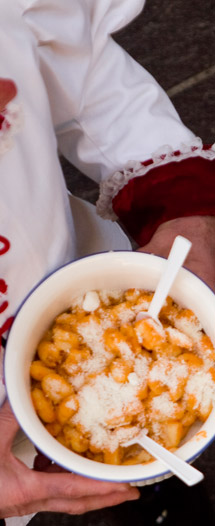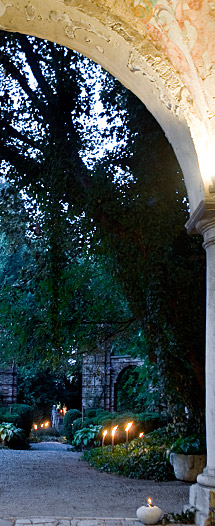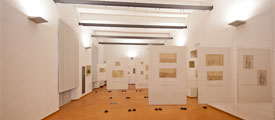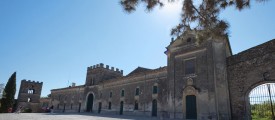Cathedral of the Assumption of the Blessed Virgin Mary
In 1472 the works started to erect the present building, designed by Guglielmo de Lera, in the place where already in the fourteenth century there was a small church dedicated to St. Andrew. The new church was consecrated by the Archbishop of Lepanto Marco Saracco on 27 January 1501, and was completed during the first decades of the sixteenth century under the direction of Francesco Biondello from Asola. Soon, it became the main parish church in Asola, and Collegiate with its canonical chapter and its archpriest mitred by Pope Julius II (1507). From 1697 to 1818 it was the cathedral church of the prelature nullius dioecesis of Asola, with episcopal jurisdiction and prerogatives.
Outside, the only elements of the ancient fourteenth century building that we can still see today are the slender bell tower and the polygonal apse. The right side, overlooking the square, looks like a second facade. On this side, are remarkable the sixteenth century clock in the middle of the nave and the rose window placed at the head of the transept, decorated with refined terracotta decorations. The real facade, where three rose windows open up the space, is much simpler. The large interior is based on the late Gothic Lombard style. The floor plan is a Latin cross with three naves covered by cross vaults separated by pointed arches supported by six cross pillars. Besides the high altar there are eight more altars. In the left transept opens a square planned baroque chapel and a dome inspired by St. John Chrysostom, the patron saint of Asola.
Being the most important religious building of the parish since the fifteenth century has favored the establishment in the church of St. Andrew of numerous works of art. The frescoes that decorate the vaults of the side aisles date back to the late fifteenth century and are attributed to Antonio della Corna from Cremona. He may also be the author of the magnificent altarpiece of Mercy placed at the High Altar. Moreover, the complex organ is one of the most important pieces of art kept here. In 1524 the community of Asola commissioned Girolamo Romanino the organ’s doors depicting on the front the Sacrifice of Isaac and Augustus and the Sibyl, and on the back the Saints Andrew and Erasmus. In the following years, the boards of the choir were also entrusted to him. Romanino also painted the figures on the pillars of the arch supporting the Serassi organ. Clemente Zamara contributed to embellish this monument with his carvings. In 1535-36 Romanino worked on the decoration of the pulpit.
Moretto is the other great figure of the sixteenth century art in the Brescia area, and his work is reflected in Asola in a cycle of 8 tempera paintings, now preserved in the G.B. Tosio parish Museum.











